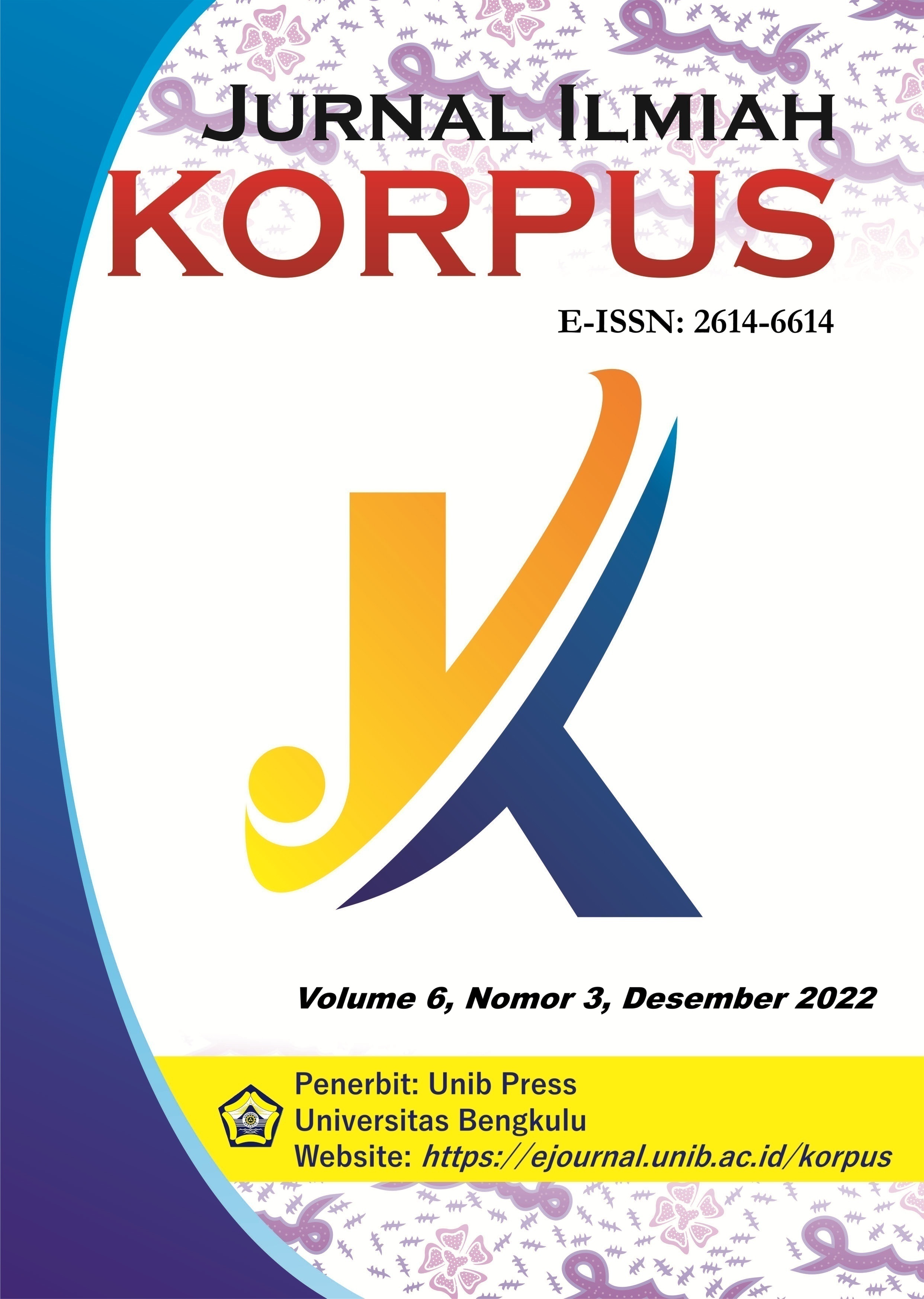Main Article Content
Abstract
This study aims (1) to inventory or collect marks on the Serawai ethnicity in Seluma Regency so that it can be a source of learning for the appreciation of old literature. (2) Finding and explaining the moral values contained in the mark of the Serawai ethnicity in Seluma Regency. The method used in this research is a descriptive qualitative method. The data collection technique was carried out by (1) Observation (2) Defect technique (3) Recording (4) Documentation. Data Analysis Techniques (1) perform translation (2) find and explain moral values (3) conclusions. Research Results (1). Until now, markers are still found in 5 sub-districts in Seluma district, although they are no longer told productively because it is difficult to find sources who can still mark, plus many have had health problems and died. The Nandai that was found was the Nandai ghenai which is a type of legend and fairy tale. (2) There are moral messages and values that can be taken in the markings on the Serawai ethnicity such as individual moral values (honest, patient, disciplined, and responsible) and social moral values (respect for every human being, respect for women, respect for the opinions of others , loyal, polite, and true to promises). (3) Nandai can be used as a source of learning appreciation for old literature in Seluma district at the Junior High School, Senior High School, and General levels because it has two languages (Serawai and Indonesian)and Glossary.
Keywords: Nandai Serawai Ethnic, Learning Values, Learning Resources
Article Details
Copyright (c) 2023 Abenda Mareta, Emi Agustina, Sarwit Sarwono

This work is licensed under a Creative Commons Attribution-ShareAlike 4.0 International License.
Authors who publish with this journal agree with the following terms:
- Authors retain copyright and grant the journal right of first publication with the work simultaneously licensed under a Creative Commons Attribution License that allows others to share the work with an acknowledgment of the work's authorship and initial publication in this journal.
- Authors are able to enter into separate, additional contractual arrangements for the non-exclusive distribution of the journal's published version of the work (e.g., post it to an institutional repository or publish it in a book), with an acknowledgment of its initial publication in this journal.
- Authors are permitted and encouraged to post their work online (e.g., in institutional repositories or on their website) prior to and during the submission process, as it can lead to productive exchanges, as well as earlier and greater citation of published work (See The Effect of Open Access).
- This work is licensed under a Creative Commons Attribution-ShareAlike 4.0 International License.
